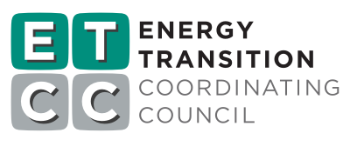Project Info
ACTIVE
Project Title
Improving HVAC Refrigerant Charge Value Estimates for Commercial Systems
Project Number ET25SWE0037 Organization SWE (Statewide Electric ETP) End-use HVAC Sector Commercial Project Year(s) 2025 - 2025Description
In 2022, greenhouse gas (“GHG”) emissions in California were approximately three hundred seventy (370) million metric tons of CO2 equivalent (“MMTCO2e”)(California Air Resources Board, 2024). Second only to the transportation sector, California buildings account for twenty-five percent (25%) of the annual total (California Law, 2019). One component of the GHG emissions from buildings is leakage of refrigerants from Heating, Ventilation, and Air Conditioning (“HVAC”) systems. During the lifetime of installed HVAC equipment, leakages can occur due to corrosion or faults in piping and pipe connections, mechanical vibrations, physical damage, or simply age-related wear and tear. Leakages can also occur at the beginning of life (leaks while charging the system) and end-of-life - if refrigerant recovery is not executed properly.To achieve California’s decarbonization goals through electrification, the state is encouraging replacement of gas equipment with electric. This includes the increased installation of HVAC heat pumps, which introduces refrigerants and makes refrigerant management more urgent. A recent report (The National Renewable Energy Laboratory (“NREL”), 2022) indicated that refrigerant leakage accounts for fifteen to twenty percent (“15%-20%”) of total GHG emissions (including emission from power generation) in commercial buildings nationally. In states with a cleaner grid (such as CA) the GHG emission proportion attributable to refrigerant management is even greater.For California Investor-Owned Utilities (“IOU”) programs, avoiding GHG emissions from HVAC system refrigerant leakage has a direct effect on the cost effectiveness of a measure and whether it passes the fuel substitution test, and refrigerant avoided cost test. The existing measure in the Energy Trading and Risk Management (“eTRM”) measure catalog for commercial refrigerant charge values is:- Refrigerant Charge Adjustment, Commercial (SWSV002-01) This measure, as well as new measures that may be proposed for the 2028-2029 program cycle will benefit from a better understanding of refrigerant charge values for estimating leakage rates. This research was proposed by The California Public Utilities Commission (“CPUC”) in the Database for Energy Efficiency Resources (“DEER”) 2026 Resolution (3) and will impact all CA energy efficiency programs offering commercial HVAC measures.TRC Engineers, Inc. (“TRC” or “Implementer”) will provide all qualified personnel from internal staff (the (“Project Team”) to complete this project. The Project Team will collect the most recent refrigerant charge value data from Commercial HVAC equipment manufacturers and distributors to improve reliability of the charge values used in measure development. This project will result in proposed updates to the data tables underlying the DEER Refrigerant Avoided Cost Calculator (“RACC”) and Combined Refrigerant Avoided Cost and Fuel-Substitution Calculators, Version 3.1 (“RACC-FSC_v3.1”) tools.
